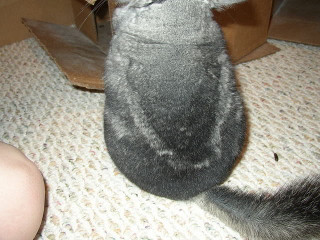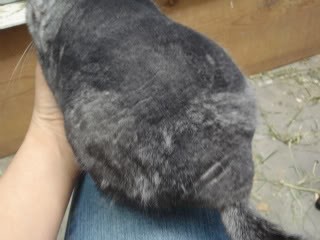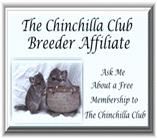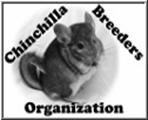
Priming is what chinchilla breeders and ranchers call shedding. It is often seen as a line, called a priming line, which begins at the back of the head and works its way down the chinchilla from front to back over the course of a twelve to fourteen weeks. The line is visible because the new, shorter fur creates a line which is darker than the rest of the fur on dense, well veiled animals and lighter on poorly veiled chinchillas with thinner coats. As the line reaches the area of the hips, it takes on a horseshoe shape. In animals with very dense fur, the line may not be evident. Instead, priming shows up as tufts of fur that stick out of the coat. These tufts can be limited to areas such as the hips or be present all over the body. Animals that display tufts of dead fur can benefit from a grooming to help remove it. Dusting will also help to remove the tufts. Occasionally, a chinchilla will show both attributes of priming, exhibiting a priming line and tufts simultaneously.
Chinchillas usually prime for the first time at around five to eight months of age. They will prime for a second time approximately four to six months later. After that, the chinchilla will prime every four to six months. Chinchillas can often have one priming line at the head and one at the rear depending on how long it takes for the previous prime to finish.

Weather can have an effect on priming. Often a short period in which the temperature rises causes a new round of priming. Another priming will follow approximately four to six months later. Cold weather can also affect priming, slowing the rate at which it occurs.
In the world of chinchilla shows, the word “prime” has a second use. Judges may refer to a chinchilla as being in or out of prime. When used in this manner, the judge is referring to the condition of the chinchilla’s coat. A chinchilla that is in prime has new fur from head to tail with no tufts and no priming lines. The coat of an animal in prime is smooth and has no breaks or lines in its fur. Of course, it follows that an animal that is out of prime has tufts, one or more priming lines or a both.



 Site Last Updated on December 31, 1969 05:00 pm
Site Last Updated on December 31, 1969 05:00 pm